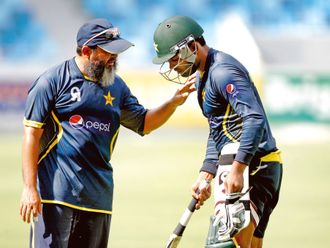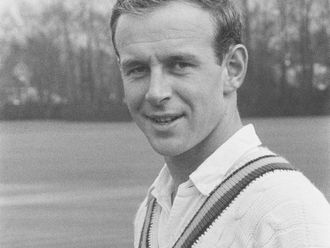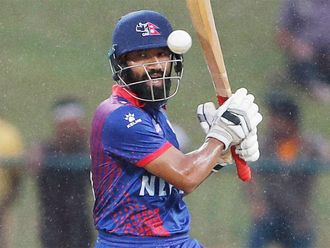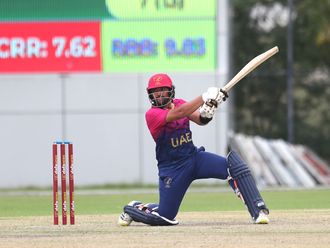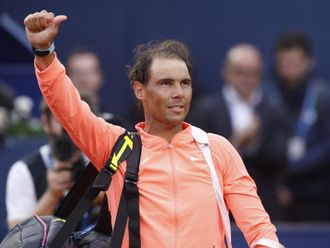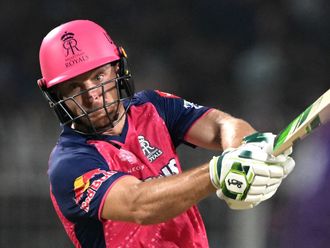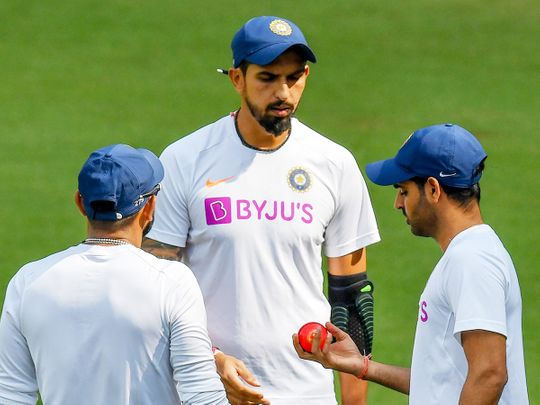
New Delhi: It took him a while to become the pace spearhead of the Indian bowling unit. But after 12 years at the international level and with 96 Tests in the bag, Ishant Sharma is undoubtedly worthy of the tag of leader of a pack of bowlers who have made India proud in the last couple of years with their consistent showing in the longest format of the game.
Speaking after Delhi managed to beat Hyderabad by seven wickets, Ishant spoke about looking to start 2020 afresh, the rigours that come with fast bowling, the pride of leading an extremely talented group of fast bowlers and most importantly, how a stint with Jason Gillespie helped him take the jump to the next level.
“My journey has been one with lot of ups and downs. But now I have started enjoying my cricket much more. I am not into comparisons with Zak paa (Zaheer Khan) or Kapil paaji (Kapil Dev) to be honest. They have performed for the country. As far as I am concerned, I can tell you whatever experience I have gained, I try and pass it onto the juniors. That’s important. So that in coming years, there is another fast bowler who can play for Delhi. That would make me proud.
“Fitness is an important factor. Fast bowling is 80 percent fitness and 20 percent skill. I realised when I had my surgery in 2012. Communication, experience and fitness culminates into performance,” he said as he looks at reaching the 100-Test mark.
Asked if it has been frustrating at times that pundits would be critical of his length and his inability to turn potential into performance, Ishant said that everyone pointed the problem, but nobody gave the solution till Gillespie came into the picture.
“I don’t watch a lot of videos. I think a lot about my bowling at the end of a day’s play. I try to find out how many balls have I pitched in the areas I wanted. When you get those numbers, you can then think about your bowling. You get an idea about your execution and the poor deliveries that you bowled, why did you bowl them. This comes with experience.
“The problem in India is that everybody tells you about the problem but no one tells you about solution. Now knowing the solution is an important aspect. I have realised that may be one or two people worked on the solutions. Problem everyone can tell you but one who is a good coach will tell you about solutions.
“Zak gave us a lot of solutions. A lot of people would tell me that I need to increase the pace of my fuller deliveries. No one told me how to do that? Now I realised it myself how I could increase the speed of my pitched up deliveries. Now when I went to play county cricket, Jason Gillespie told me the solution.
“He told me that in order to increase pace in my fuller deliveries, you don’t just release it but hit the deck so that it should target the knee roll. Like first, I would put cones during nets. But that’s okay for a youngster, who wants to get his area right but for someone like me, I need to see where my ball is finishing rather than where its pitched. Practice is almost same but outcome is different. Gillspie’s instructions ensured that my fuller delivery is faster now,” he explained about the transition.
So what exactly was Ishant looking at coming into this Ranji Trophy game? Is workload management an area of concern as it is made out to be?
“Didn’t think so much, but yes nothing substitutes game time. When you take wickets, you automatically get rhythm as there are long breaks between Test series. When you play at this level for so long, you know how to manage workload, especially, when a bowler is injured. But I don’t think too much about it. I will take load, bowl number of overs required and will bowl till opposition gets out.
“My coach from the start has only made me bowl. But with bowling, training also becomes important. How to manage your body also is a factor. I bowl, I train and I try level best to manage fitness. Also this is Ranji Trophy cricket not some club match. At this level, you have to give your hundred percent and bowl with same intensity as Test matches,” he pointed.
“As far as BCCI, they give us intimation which matches to play, there are concerns. During the last Test that I played (vs Bangladesh), I had a grade I hamstring tear, I didn’t play first two Ranji games. I went to NCA did my rehab. Gradually, you need to keep in mind that you keep yourself reasonably fresh and at the same time you should also have overs under your belt so that you are not sore when you go into a Test match.”
This Indian bowling attack is one that shall go down in history as one of the best the country produced and Ishant says he feels extremely proud of the same.
“We are feeling proud hopefully you all are feeling proud. We three (Shami and Umesh) started but initially there was lack of experience. So we didn’t take wickets in tandem. Now we are experienced, we know more about bowling and that comes with time.
“We share our experiences. Not just me but they also give their feedback about how the pitch behaves, about conditions. The communication is far better now. First, we didn’t know each other a lot, you are reserved but now communication level is very good,” he smiled.


